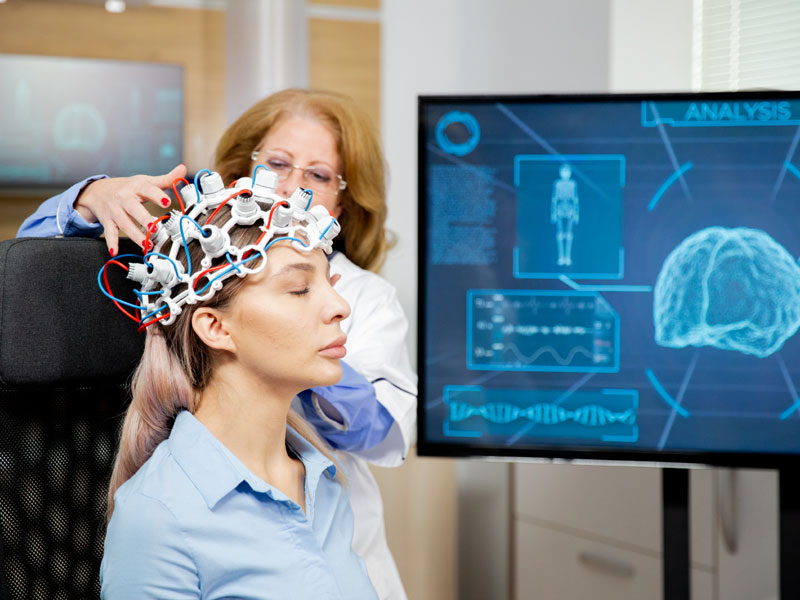The Science Behind Neurofeedback: How It Rewires the Brain
Have you ever wished your brain could just learn to relax, focus, or sleep better? That’s what neurofeedback helps it do. It’s a science-based method that trains your brain—just like exercise trains your muscles—to work in a healthier, more balanced way.
What Is Neurofeedback?
Neurofeedback (sometimes called brain training) is a way to help your brain understand what it’s doing and make small changes over time. During a session, tiny sensors are placed on your head to measure brainwave activity—electrical signals that show how active or calm your brain is.
You might watch a movie, listen to music, or play a simple game on a screen. When your brain is calm and focused, the screen stays bright or the sound plays clearly. When your brain drifts into patterns linked to stress or distraction, the movie dims or pauses. This real-time feedback helps your brain “see” what it’s doing and slowly learn how to stay in a healthier state. Over time, it starts doing this automatically—even outside the session.
How It Works: The Brain’s Ability to Change
Our brains can change and grow throughout life. This ability is called neuroplasticity. It means your brain can build new connections, repair old ones, and improve its performance through practice.
Neurofeedback uses this natural power. By rewarding the brain when it makes good patterns, it teaches the brain to stay balanced. Think of it as giving your brain a mirror—when it sees what works, it keeps doing it.
Brainwaves and Balance
Your brain gives off different kinds of brainwaves, depending on what you’re doing or feeling:
- Delta – deep sleep and healing
- Theta – daydreaming and creativity
- Alpha – calm focus
- Beta – alertness and problem-solving
If your brain produces too much or too little of one kind of wave, you might feel anxious, foggy, or unfocused. Neurofeedback helps even out these patterns so your brain can switch smoothly between rest, focus, and sleep.
Who Can Benefit
Neurofeedback has been helpful for many people, including those who struggle with:
- ADHD and attention problems
- Anxiety and stress
- Depression
- Sleep issues
- PTSD and trauma
- Headaches or migraines
- Memory or performance challenges
People often say they feel calmer, more clear-minded, and more in control after several sessions.
What a Session Is Like
A session usually lasts 30–45 minutes. You sit comfortably while sensors record your brain activity. A computer gives feedback through a movie, game, or sound. There’s no shock or pain—it’s completely safe and non-invasive. After several sessions, your brain begins to remember what “balanced” feels like and can return to it more easily.
Why It Matters
Neurofeedback shows us that we don’t have to stay stuck in old habits of stress or distraction. The brain can learn new ways to feel calm, focused, and strong. It’s like giving your mind a reset button.
At Angels Psychiatry
At Angels Psychiatry, we now offer qEEG-guided neurofeedback—a modern, gentle, and evidence-based way to help your brain heal itself. Whether you want to manage anxiety, sleep better, or improve focus, neurofeedback can help your brain find its natural rhythm again.


